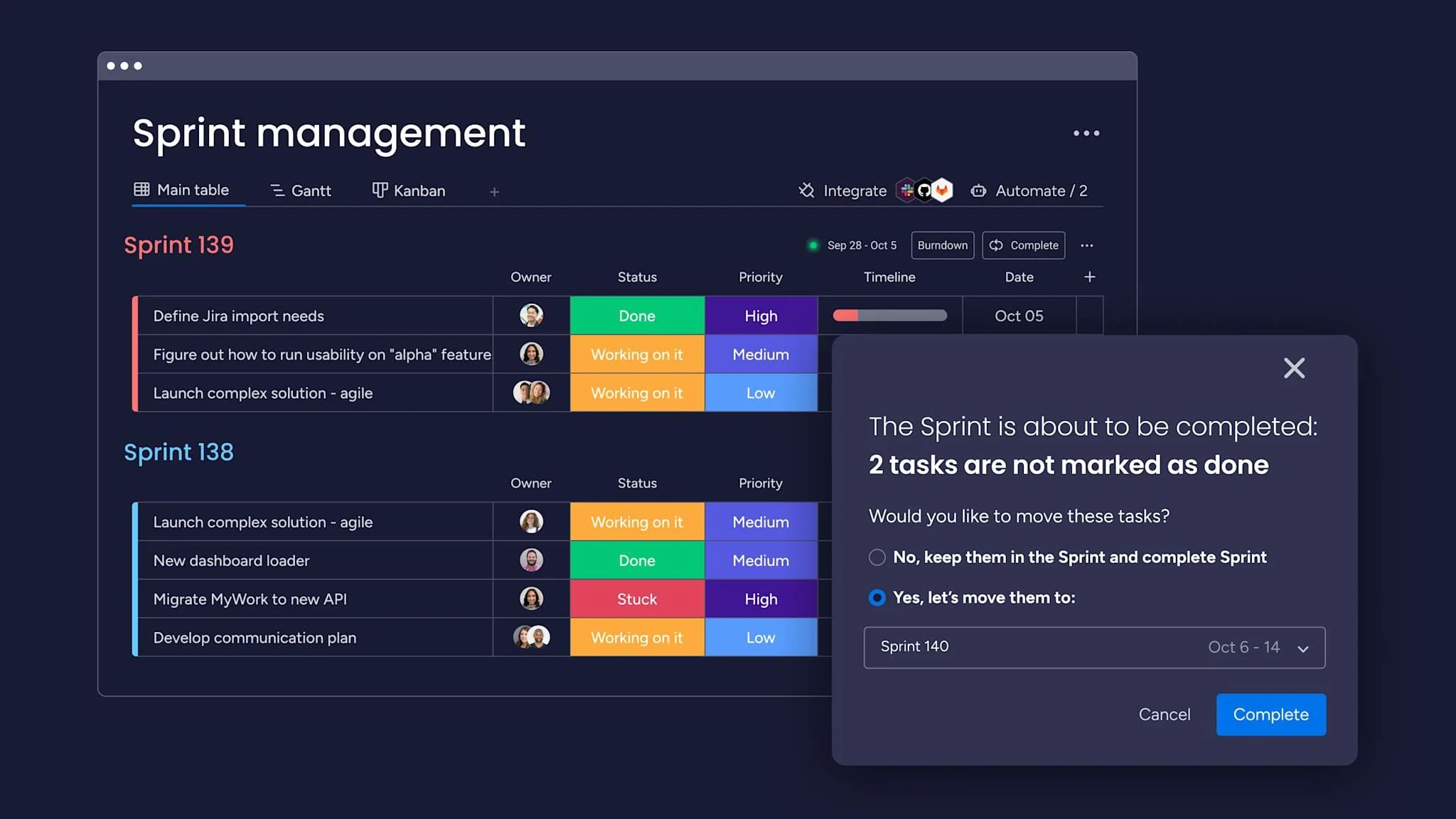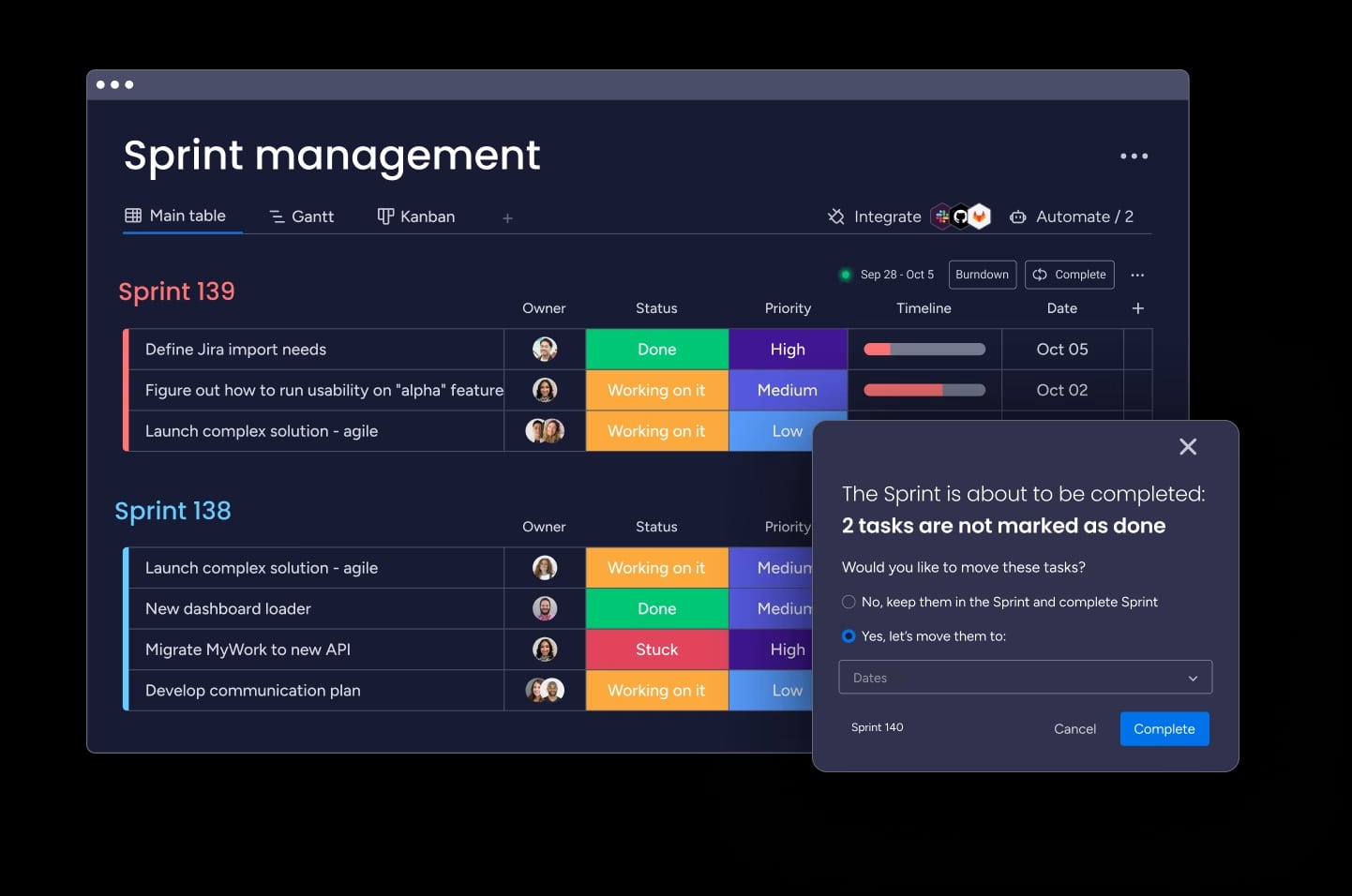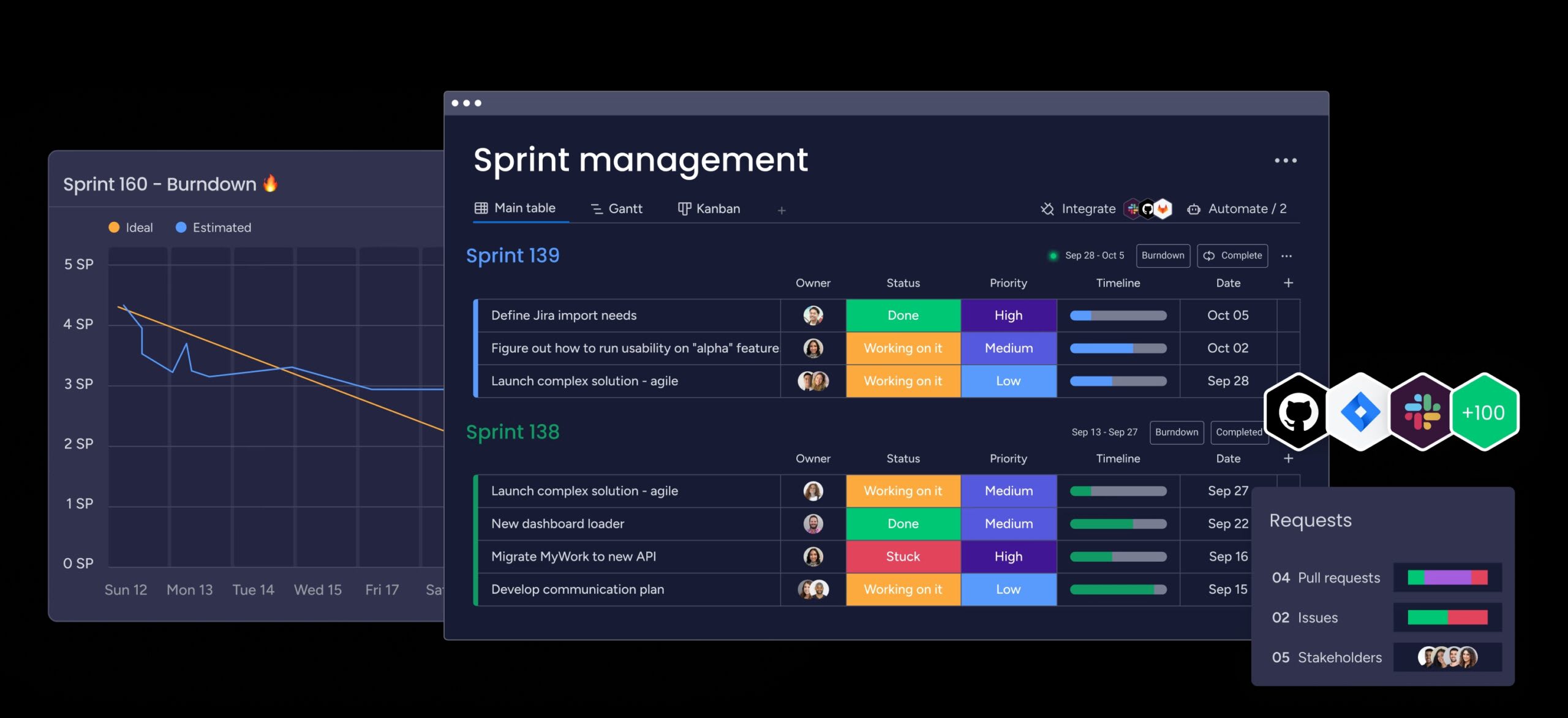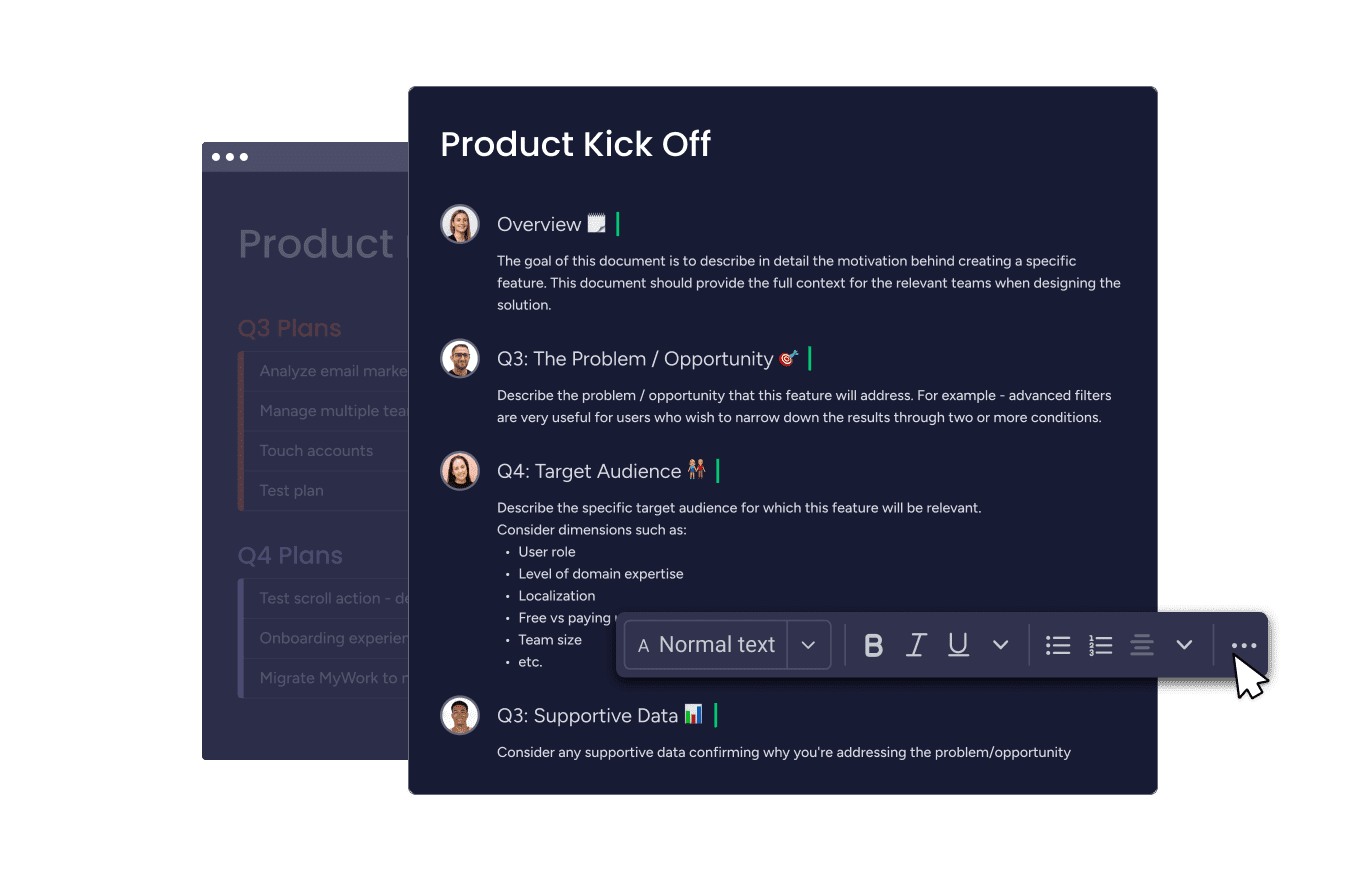Software teams today work under constant pressure to deliver new features quickly while keeping systems reliable and maintainable. When speed takes priority over structure, the result is often buggy releases, mounting technical debt, and code that becomes harder to improve with every iteration. This slows innovation and drains developer confidence.
Test-driven development (TDD) provides a disciplined way to escape this cycle. Instead of writing code first and testing later, TDD flips the sequence by starting with automated tests that define the desired behavior. Developers then write just enough code to pass the test and refine it through the well-known red-green-refactor loop.
In this article, we’ll explore how TDD works, why it matters in 2025, and the benefits it brings to teams aiming for cleaner, more resilient code. We’ll also dig into the common challenges when adopting TDD and how to avoid them, along with offering practical tips for building workflows that support both quality and speed.
Key takeaways
- TDD follows a three-step cycle: write a failing test, add minimal code to pass it, then refactor for quality. This catches bugs early and supports better design.
- Writing tests first creates cleaner software: test suites act as a safety net, making code easier to maintain, debug, and improve over time.
- TDD works best for complex logic and long projects: avoid it for quick prototypes or tight deadlines and match your testing strategy to project needs.
- Platforms like monday dev streamline TDD: real-time test visibility, automated workflows, and collaboration tools help teams stay consistent and track quality.
- Avoid common mistakes: don’t write tests after code, make them too complex, or skip refactoring. Keep tests simple, behavior-focused, and well-maintained.
What is test-driven development?
Test-driven development (TDD) is a software development approach where tests are written before the actual code. The cycle begins with creating a test that defines the desired behavior, followed by writing just enough code to make that test pass. This method integrates TDD into the software development process, helping teams build quality and reliability into every step.
A clear way to understand TDD is to compare it to making a packing list before a trip. The test acts as the list, defining what’s required, while the code fills those needs one by one.
Understanding TDD meaning and core principles
TDD operates on three core principles that guide how you build software. These principles work together to create a disciplined approach that catches bugs early and keeps code clean.
- Test-first approach: you write tests before production code, which forces you to think about what you want to achieve before diving into implementation.
- Red-green-refactor cycle: you follow a three-step rhythm — write a failing test (red), make it pass (green), then improve the code (refactor).
- Incremental development: you build software piece by piece, making it easier to spot problems and maintain quality.
- Red-green-refactor cycle: you follow a three-step rhythm — write a failing test (red), make it pass (green), then improve the code (refactor).
- Incremental development: you build software piece by piece, making it easier to spot problems and maintain quality.
The red-green-refactor cycle is at the core of TDD. It begins with writing a test that fails, since the code doesn’t exist yet. Next, you write the simplest code required to make that test pass. Once it’s working, you refine and improve the code while keeping the test green to ensure nothing breaks.
Brief history of test-driven development
TDD emerged from the Extreme Programming (XP) movement in the late 1990s. Kent Beck, one of XP’s creators, played a crucial role in formalizing TDD and popularizing the practice of writing tests first as a way to improve code quality.
Before TDD, developers typically wrote all their code first, then tested it later — often discovering bugs that required major rewrites. TDD flipped this approach, making testing an integral part of the development process rather than an afterthought, an approach that also helps in tackling technical debt early.

How the TDD process works
At the heart of test-driven development is a repeating cycle that steadily builds working, reliable code. Each loop begins with a failing test and ends with improved functionality that’s backed by automated checks. A well-structured test plan ensures that every requirement is accounted for, and with platforms like monday dev, teams can integrate these plans directly into their workflows for better visibility and alignment.
The process itself unfolds in three simple steps:
Step 1: Write a failing test first
Kick things off by writing a test for the next small piece of functionality you want to add. This test will fail because the code doesn’t exist yet — that’s exactly what you want.
For example, if you’re building a calculator, your first test might check that 2 + 2 equals 4. The test fails because you haven’t written the addition function yet. This failing test now guides what code you need to write, especially when you pair it with a PRD template that outlines key requirements.
Step 2: Write the minimum code to pass
Next, you write just enough code to make your test pass — nothing more. For the calculator example, you might write a function that simply returns 4. While this might seem a little silly, it gets your test passing quickly.
Keep in mind that the goal isn’t to write perfect code immediately: essentially you want to establish that your test works correctly and create a foundation you can improve.
Step 3: Refactor and improve code quality
Now that your test passes, you can safely improve your code. You might replace that hard-coded 4 with actual addition logic. The test ensures you don’t break anything while making improvements.
Refactoring means cleaning up your code — removing duplication, improving names, or reorganizing structure. Your passing tests act as a safety net during these changes.
Key benefits of test-driven development
TDD delivers concrete benefits that matter to both developers and business leaders. These advantages go beyond just catching bugs — they fundamentally improve how teams build and maintain software.
Enhanced code quality and maintainability
TDD naturally leads to cleaner, more modular code. When you write tests first, you’re forced to think about how your code will be used, which typically results in simpler, more intuitive designs.
This test-first approach also ensures your code is testable from the start. Testable code tends to have fewer dependencies and clearer interfaces, making it easier to understand and modify later.
Faster bug detection and resolution
With TDD, you catch bugs within minutes of writing them, not weeks later during integration testing. This immediate feedback saves enormous amounts of debugging time.
When bugs do slip through, your comprehensive test suite helps pinpoint exactly where things went wrong. With platforms like monday dev, you can utilize integrated bug-tracking software to track and resolve those issues effectively in one central place. Instead of hunting through thousands of lines of code, you can focus on the specific test that’s failing.
Enhanced software design and architecture
Starting with tests encourages developers to design software that is cleaner, simpler, and easier to maintain. TDD naturally leads to loosely coupled components that are straightforward to test and evolve over time.
Key benefits include:
- Loosely coupled code that reduces dependencies and makes components easier to reuse.
- Improved clarity in how each part of the system is expected to behave.
- Simpler maintenance since well-structured code is easier to debug and extend.
By utilizing a platform like monday dev, teams can also take this further by visualizing dependencies and tracking how components interact. This visibility ensures that TDD practices not only improve individual features but also support sustainable design across the entire system.
Increased developer confidence and productivity
A comprehensive test suite gives developers confidence to make changes without fear. Need to refactor a critical component? Your tests will tell you immediately if something breaks.
This confidence translates directly into productivity. According to monday.com’s 2023 World of Work report, employees who understand how success is measured are twice more likely to feel motivated. Research also shows a strong correlation between TDD and increased developer productivity because developers spend less time on debugging and more time building new features.
Test-driven development vs traditional testing
Understanding how TDD differs from traditional testing or agile testing can really help you choose the right approach for your projects. Both have their place, but they serve different purposes (as we’ll outline below).
| Aspect | Traditional testing | Test-driven development |
|---|---|---|
| When tests are written | After code is complete | Before code is written |
| Primary purpose | Find bugs | Guide design and prevent bugs |
| Test coverage | Often incomplete | Comprehensive by design |
| Code design influence | Minimal | Significant |
Core differences in development approach
Traditional testing treats testing as a separate phase that happens after development. You write all your code, then write tests to verify it works. This often leads to discovering design problems too late to fix easily.
TDD integrates testing into the development process itself. Tests aren’t just verification — they’re a design tool that shapes how you write code. This “shift-left” approach catches problems when they’re cheapest to fix.
How to choose the right testing strategy
The right testing approach depends on your project goals, timelines, and team experience. While TDD delivers long-term quality and maintainability, traditional testing can still be the right choice in some situations.
When to use TDD:
- Prioritize long-term maintainability with clean, reliable code.
- Complex business logic that benefits from continuous validation.
- Teams committed to refactoring and improving design over time.
When to use traditional testing:
- Simple prototypes where speed matters more than structure.
- Tight deadlines that limit upfront test creation.
- Projects with minimal complexity that don’t justify full TDD cycles.
Platforms like monday dev make either strategy easier to manage by supporting customizable workflows, integrated testing pipelines, and real-time visibility into progress.

When to implement test-driven development
Knowing when to use TDD helps you maximize its benefits while avoiding situations where it might slow you down. The key is matching the approach to your project’s needs.
Ideal scenarios for TDD adoption
- Complex business logic: when your code implements intricate rules or calculations that must work correctly.
- Long-term projects: where you’ll maintain and evolve the code for months or years.
- Team learning: when developers want to improve their design skills through practice.
- Legacy system updates: where breaking existing functionality would be catastrophic.
Situations where TDD may not apply
- Prototype development: when you’re exploring ideas and might throw away the code.
- Simple CRUD operations: where the logic is straightforward and well-understood.
- Tight deadlines with experienced teams: when shipping quickly matters more than perfect code.
Exploring different TDD implementation approaches
While the red-green-refactor cycle defines the core of TDD, teams can apply it in different ways depending on their goals and context. Two common approaches (inside-out and outside-in) shape how you design tests, structure code, and deliver value.
Understanding these approaches makes it far easier to decide which one fits your project and team best.
Inside-out test-driven development
Inside-out TDD starts with the smallest pieces and builds outward. You begin by testing individual functions or classes, then combine them into larger components.
This approach works well when you understand the problem domain clearly. It’s also easier for beginners because you start with simple, isolated tests.
Outside-in test-driven development
Outside-in TDD starts with the user’s perspective and works inward. You write tests that describe what users should experience, then implement the code to satisfy those tests.
This approach keeps you focused on delivering user value. It’s particularly effective for user interfaces and customer-facing features where the external behavior matters most.
Deciding on the right TDD strategy
Your choice between inside-out and outside-in depends on several factors. Consider your team’s experience, the type of project, and how well you understand the requirements.
- Team experience level: beginners often find inside-out easier to learn.
- Project type: APIs and libraries suit inside-out; user interfaces benefit from outside-in.
- Stakeholder involvement: outside-in works well when you have clear user stories.
What are the best test-driven development platforms?
Successful TDD requires the right platforms to support your workflow. These platforms automate testing, provide feedback, and integrate with your development process.
Popular unit testing frameworks
Unit testing frameworks provide the foundation for TDD. They let you write and run tests quickly, giving you the fast feedback that makes TDD effective.
Popular frameworks include JUnit for Java, pytest for Python, and Jest for JavaScript. Each provides similar core features — test organization, assertions, and test runners — adapted to their specific language.
Mocking and test double platforms
Mocking platforms let you test code in isolation by simulating external dependencies. This keeps your tests fast and focused on the code you’re actually testing.
These platforms create “test doubles” — fake versions of databases, APIs, or other systems. Your code interacts with these fakes during testing, eliminating slow or unreliable external dependencies.
Continuous integration for TDD
Continuous integration (CI) helps TDD succeed by running tests automatically whenever code changes. This keeps the codebase stable and ensures new functionality doesn’t break existing behavior.
Key benefits of CI in TDD include:
- Immediate feedback on whether new changes pass or fail.
- Consistent quality by catching regressions early in the development cycle.
- Faster delivery since automated checks reduce manual testing effort.
Through integrations with leading CI platforms, monday dev gives teams visibility into test results in real time. You can track coverage, spot failing tests quickly, and confirm that quality standards are being met across the entire team.
Exploring TDD in Agile
Test-driven development fits neatly within Agile because both approaches emphasize iteration, feedback, and working software over heavy documentation.
When teams use disciplined Agile practices, TDD becomes even more effective, adding structure and reliability to the fast-paced cycles of delivery. In the sections below, we’ll look at how TDD supports Scrum teams, continuous delivery, and modern DevOps workflows.
Integrating TDD with Scrum teams
TDD fits naturally into Scrum’s sprint-based workflow. During sprint planning, you can use Agile estimation techniques to estimate stories more accurately because TDD breaks work into small, testable pieces.
Daily stand-ups become more meaningful when everyone can report on specific tests they’re working on. The concrete nature of tests makes progress visible and measurable.
Supporting continuous delivery with TDD
Continuous delivery depends on confidence that your code works correctly. TDD provides that confidence through comprehensive test coverage.
With a solid test suite, you can deploy frequently without fear. monday dev helps teams track deployment frequency alongside test coverage, and can support rapid application development to ensure quality remains high as delivery speed increases.
TDD in modern DevOps workflows
DevOps practices rely on automation and reliability — exactly what TDD provides. Your test suite becomes part of the deployment pipeline, catching problems before they reach production.
TDD also improves collaboration between development and operations teams. Clear tests serve as documentation, helping ops teams understand what the code should do.
7 TDD challenges and how to master them
Even experienced teams encounter challenges with TDD. Understanding these common pitfalls helps you avoid them and maintain effective TDD practices.
1. Prioritize writing tests before code
The temptation to write code first is strong, especially under pressure. But this defeats TDD’s purpose and loses its design benefits.
Maintain discipline by making test-first development a team agreement. Code reviews should verify that tests exist before merging new code.
2. Creating overly complex tests
Complex tests with multiple assertions or complicated setup are hard to understand and maintain. When a complex test fails, it’s often unclear what went wrong.
Keep tests simple and focused. Each test should verify one specific behavior with minimal setup.
3. Neglecting test maintenance
Tests need maintenance just like production code. Outdated or slow tests frustrate developers and undermine TDD’s benefits.
Treat test code as first-class code. Refactor tests regularly, remove obsolete ones, and optimize slow tests.
4. Testing implementation over behavior
Testing internal implementation details makes tests brittle. These tests break whenever you refactor, even if the behavior remains correct.
Focus on testing what your code does, not how it does it. Good tests survive refactoring of the underlying implementation.
5. Skipping the refactor phase
Under pressure, teams often skip refactoring after getting tests to pass. This leads to messy code that becomes harder to work with over time.
The refactor phase is essential. Schedule time for it and resist pressure to move on too quickly.
6. Incomplete test coverage
Gaps in test coverage let bugs slip through. But achieving 100% coverage everywhere isn’t practical or valuable.
Focus coverage on critical and complex code. Use coverage tools to identify important gaps, not to chase arbitrary percentages.
7. Slow test execution
Slow tests discourage frequent test runs, breaking TDD’s fast feedback loop. Developers start skipping tests, defeating the purpose.
Keep tests fast by avoiding external dependencies and running tests in parallel. Invest in test infrastructure to maintain speed as your suite grows.

TDD best practices for development teams
Adopting TDD is only the first step. To really make it sustainable, teams need consistent habits that keep testing effective without slowing progress. The practices below help avoid common pitfalls, improve collaboration, and strengthen software quality assurance across the organization.
Establishing team TDD standards
Consistent practices across your team improve collaboration and code quality. Define standards for test naming, structure, and organization that everyone follows.
Document your standards and review them regularly, keeping in mind that 60% of employees globally believe more effective training would improve change management. New team members should learn these standards as part of onboarding.
Maintaining fast test feedback loops
TDD depends on quick feedback. If tests take too long to run, developers won’t run them frequently enough.
Keep your test suite fast by categorizing tests and running them at appropriate times. Unit tests should run in seconds, while integration tests might run less frequently. monday dev helps teams track test execution times and identify bottlenecks.
Balancing test coverage with productivity
Pursuing 100% test coverage everywhere wastes time and provides diminishing returns. Focus your testing effort where it provides the most value.
Critical business logic deserves thorough testing. Simple getters and setters might not need tests at all. Use risk-based thinking to guide your coverage decisions.
How to scale test-driven development across teams
As organizations grow, maintaining consistent TDD practices becomes challenging. Success requires coordination, shared standards, and the right platforms, which is especially important when managing software teams across multiple locations or time zones.
Managing TDD in distributed development
Distributed teams face unique challenges when trying to maintain TDD discipline. Time zones, communication gaps, and varying development practices can all create inconsistencies. To keep standards high, teams should focus on practices that strengthen alignment across locations:
- Schedule regular pairing sessions through video calls to maintain shared understanding and knowledge transfer.
- Document TDD standards so expectations are clear, consistent, and easy for new team members to follow.
- Use automated checks to enforce consistency and catch deviations quickly, no matter where code is written..
Ensuring consistent TDD practices
Consistency across teams requires more than just documentation. You need active knowledge sharing and continuous reinforcement of good practices.
Create communities of practice where teams share experiences and solutions. Regular training sessions help spread TDD expertise throughout the organization.
Measuring TDD success metrics
Measuring the impact of TDD means tracking outcomes that reflect real value, such as lower defect rates, faster development velocity, and stronger code quality.
Platforms like monday dev make this easier with dashboards that visualize these metrics across teams, giving leaders clear evidence of progress while helping identify where practices can improve.

Transform your TDD workflow with monday dev
Successful TDD requires more than disciplined practices — it benefits from tools that make testing seamless, visible, and collaborative. With monday dev, teams can bring test coverage, automation, and cross-team alignment into their everyday development workflow. The result is a streamlined process that accelerates delivery while strengthening code quality.
Real-time test coverage visualization
Monitor test coverage metrics as they update in real-time within your development pipeline. monday dev’s customizable dashboards display coverage trends across multiple projects, allowing team leads and managers to identify quality patterns at a glance.
With color-coded coverage indicators and threshold alerts, teams can instantly spot areas requiring additional testing. The platform’s drill-down capabilities let you navigate from high-level metrics to specific components, files, or even individual functions that need attention.
Intelligent testing automation
Automation helps remove the manual overhead from TDD so teams can focus on writing better code. With monday dev, you can streamline your workflow by:
- Running test suites automatically when code is committed.
- Sending status-based notifications the moment a test fails.
- Generating detailed reports after each test cycle to keep stakeholders informed.
- Integrating with CI/CD pipelines for seamless execution across popular testing frameworks.
- Prioritizing tests intelligently based on recent code changes, ensuring the most relevant checks run first.
These capabilities reduce feedback time, prevent bottlenecks, and keep testing aligned with development speed.
Unified TDD collaboration hub
Break down silos between teams with monday dev’s centralized collaboration features. The shared workspace allows teams to establish and maintain consistent TDD standards through customizable templates, reusable test patterns, and documented best practices.
The platform’s knowledge base functionality preserves institutional testing expertise, while integrated code reviews specifically highlight test coverage and quality. Real-time commenting on test results facilitates quick problem-solving across distributed teams, and the built-in TDD metrics dashboard tracks adoption and effectiveness across your entire organization.
Frequently asked questions
What does TDD stand for in software development?
TDD stands for test-driven development, a software development methodology where developers write automated tests before writing the actual production code.
What are the 3 steps of the TDD process?
The three steps of TDD are: write a failing test (red), write minimal code to pass the test (green), and refactor the code while keeping tests passing.
How is TDD different from traditional testing approaches?
TDD differs from traditional testing because tests are written before the code rather than after, which guides software design and prevents bugs rather than just finding them.
Why do software development teams choose TDD?
Development teams choose TDD because it improves code quality, catches bugs early, provides confidence for making changes, and results in more maintainable software architecture.
Can TDD work with Agile development methodologies?
TDD works excellently with Agile methodologies because both emphasize iterative development, fast feedback, and delivering working software frequently.
What programming languages support test-driven development?
TDD can be practiced with virtually any programming language that has testing frameworks, including Java, Python, JavaScript, C#, Ruby, and many others.
 Get started
Get started 


